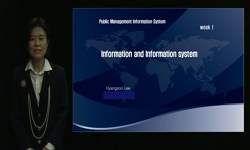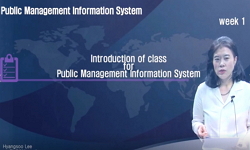전자관세 시스템 도입은 규정준수를 보장하고 무역을 촉진한다는 점에서 개발도상국 정부에게 매우 중요한 전략이다. 전자관세 시스템은 자원의 효율적 사용을 가능하게 하고 국경 간 물자...
http://chineseinput.net/에서 pinyin(병음)방식으로 중국어를 변환할 수 있습니다.
변환된 중국어를 복사하여 사용하시면 됩니다.
- 中文 을 입력하시려면 zhongwen을 입력하시고 space를누르시면됩니다.
- 北京 을 입력하시려면 beijing을 입력하시고 space를 누르시면 됩니다.
(The) factors affecting user adoption and resistance during IS transition period : the case of the Cameroon e-customs system
한글로보기https://www.riss.kr/link?id=T15771636
- 저자
-
발행사항
[Seoul] : Graduate School of International Studies, Yonsei University, 2021
-
학위논문사항
학위논문(석사) -- Graduate School of International Studies, Yonsei University , [Master of International Cooperation] , 2021.2
-
발행연도
2021
-
작성언어
영어
- 주제어
-
발행국(도시)
서울
-
형태사항
viii, 100 p. : 삽화 ; 26 cm
-
일반주기명
지도교수: 이희진
-
UCI식별코드
I804:11046-000000531876
- 소장기관
-
0
상세조회 -
0
다운로드
부가정보
국문 초록 (Abstract)
본 연구는 카메룬의 새로운 전자관세 시스템인 CAMCIS의 사용 원인과 장벽을 검토하기 위해 구조방정식(Structural Equation Modeling)을 활용하여 통합기술수용이론(UTAUT)과 현상유지 편향이론(Status Quo Bias theory)을 조합한 연구 모델을 검증하였다. 카메룬 두알라 항구(Douala port)의 관세 시스템 사용자들에게 온라인 설문조사가 배포되었으며, 총 107개의 응답이 수집되었다. 그중 100개가 부분최소제곱법(PLS)을 통해 분석되었다.
연구결과에 따르면 성과기대(Performance Expectancy)나 불확실성 비용(Uncertainty Costs)과 같은 요소들이 각각 전환혜택과 전환비용에 강한 영향을 준다. 이와 반대로, 이전 시스템의 매몰비용(Sunk Costs)은 강한 영향을 주지 않는다. 덧붙여, 본 연구 결과는 전환혜택(Switching Benefits)과 전환비용(Switching Costs)이 CAMCIS 사용자의 행동적 의도(Behavioral Intention)와 만족(Satisfaction)에 현저하게 영향을 주고 있음을 보여준다.
본 연구는 개발도상국의 전자정부 중 전자관세 시스템의 전환기에 대해 연구한 최초의 연구라는 점에서 의의가 있으며, 특히 UTAUT와 현상유지편향이론을 혼합한 독특한 연구 모델을 제시했다는 점에서 정보시스템의 사용자 수용 및 저항 분야에 기여하는 바가 크다. 더불어 본 연구는 정량적 방식을 통한 경험적 연구를 수행함으로써 사례 연구가 주를 이루는 사용자 저항 연구분야에 기여한다. 점점 더 많은 개발도상국의 관세 시스템이 교체주기에 접어드는 상황에서, 새로운 시스템의 효용을 극대화하고 사용자 저항을 줄이는데 중요한 요인들을 제안함으로써 전자관세 시스템 개발자들과 정책결정자들에게 실질적인 함의를 줄 수 있다.
나아가 한국의 전자정부 해외 공여 비중이 상위권인데 반해 관련 연구가 부족한 상황에서, 본 연구는 한국이 민관협력사업으로 참여한 카메룬 관세행정현대화 사업을 주제로 다룸으로써 연구 공백 해소에 기여한다.
전자관세 시스템 도입은 규정준수를 보장하고 무역을 촉진한다는 점에서 개발도상국 정부에게 매우 중요한 전략이다. 전자관세 시스템은 자원의 효율적 사용을 가능하게 하고 국경 간 물자의 흐름에 윤활제 역할을 함으로써 경제 효과를 창출한다. 그러나 전자정부 개발 프로젝트는 활용에 대한 장벽뿐 아니라 사용자의 필요조건에 대한 깊은 이해의 부재 때문에 높은 실패율을 보인다. 이를 보완하기 위해 전자정부 개발 프로젝트에 착수하기에 앞서 변화 관리를 위한 정보 시스템 전환 시기의 사용자 저항에 대한 탐구가 선행되어야 한다. 그러나 이러한 중요성에도 불구하고 개발도상국의 전자 관세시스템에 대한 연구는 매우 드물다. 더욱이, 정보 시스템 전환 시기 사용자의 기술 수용 및 저항에 대한 연구는 많지 않다. 따라서 본 연구는 기술 전환이 일어난 카메룬 전자관세 시스템 이용자에게 어떤 요인이 전자관세시스템 사용 의도와 만족도를 촉진 혹은 저해하는지 경험적으로 분석하고자 한다.
본 연구는 카메룬의 새로운 전자관세 시스템인 CAMCIS의 사용 원인과 장벽을 검토하기 위해 구조방정식(Structural Equation Modeling)을 활용하여 통합기술수용이론(UTAUT)과 현상유지 편향이론(Status Quo Bias theory)을 조합한 연구 모델을 검증하였다. 카메룬 두알라 항구(Douala port)의 관세 시스템 사용자들에게 온라인 설문조사가 배포되었으며, 총 107개의 응답이 수집되었다. 그중 100개가 부분최소제곱법(PLS)을 통해 분석되었다.
연구결과에 따르면 성과기대(Performance Expectancy)나 불확실성 비용(Uncertainty Costs)과 같은 요소들이 각각 전환혜택과 전환비용에 강한 영향을 준다. 이와 반대로, 이전 시스템의 매몰비용(Sunk Costs)은 강한 영향을 주지 않는다. 덧붙여, 본 연구 결과는 전환혜택(Switching Benefits)과 전환비용(Switching Costs)이 CAMCIS 사용자의 행동적 의도(Behavioral Intention)와 만족(Satisfaction)에 현저하게 영향을 주고 있음을 보여준다.
본 연구는 개발도상국의 전자정부 중 전자관세 시스템의 전환기에 대해 연구한 최초의 연구라는 점에서 의의가 있으며, 특히 UTAUT와 현상유지편향이론을 혼합한 독특한 연구 모델을 제시했다는 점에서 정보시스템의 사용자 수용 및 저항 분야에 기여하는 바가 크다. 더불어 본 연구는 정량적 방식을 통한 경험적 연구를 수행함으로써 사례 연구가 주를 이루는 사용자 저항 연구분야에 기여한다. 점점 더 많은 개발도상국의 관세 시스템이 교체주기에 접어드는 상황에서, 새로운 시스템의 효용을 극대화하고 사용자 저항을 줄이는데 중요한 요인들을 제안함으로써 전자관세 시스템 개발자들과 정책결정자들에게 실질적인 함의를 줄 수 있다.
나아가 한국의 전자정부 해외 공여 비중이 상위권인데 반해 관련 연구가 부족한 상황에서, 본 연구는 한국이 민관협력사업으로 참여한 카메룬 관세행정현대화 사업을 주제로 다룸으로써 연구 공백 해소에 기여한다.
다국어 초록 (Multilingual Abstract)
Despite its importance, however, research on e-customs systems in developing countries is very sparse. Furthermore, there is not much research on user acceptance and resistance during the IS transition period. Therefore, this dissertation investigates the actual systems currently in operation in Cameroon and seeks to examine the factors that encourage or hinder the utilization of the e-customs system and the satisfaction of users.
Employing the Structural Equation Model (SEM), the Unified Theory of Acceptance and Use of Technology (UTAUT) model and the Status Quo Bias (SQB) theory are used as theoretical frameworks to examine drivers of and barriers to the usage of the CAMCIS, which is a new e-customs system in Cameroon. A survey instrument was developed and data were collected from internal and external customs users in the Douala port. A total of 107 questionnaires have been collected, and 100 of them were analyzed by the Partial Least Squares (PLS) method.
Results show that performance expectancy and uncertainty costs strongly affect the switching benefits and costs respectively. On the contrary, sunk costs of the previous system have no significant impacts. Plus, the results reveal that the switching benefits and costs significantly influence the behavioral intention and satisfaction of the CAMCIS.
This study marks a new step towards a better understanding of e-customs systems in the context of a developing country, and also opens a new path in this field by creating and validating a unique model based on the UTAUT model and the SQB theory. As a number of developing countries enter the cycle of replacing their customs systems, this empirical study can give insightful knowledge to policymakers and e-government system developers about factors that are important to maximize the benefits and avoid the losses in using a new system. Furthermore, although South Korea is one of the world leaders in e-government and a top provider to developing countries, related research is limited. This study bridges such gap by addressing the e-customs system modernization project, which is provided by South Korea.
The adoption of e-customs technology is an important strategic issue for developing countries’ governments to ensure regulatory compliance and to facilitate trade. The use of e-customs causes economic effects by securing a more cost-efficient usage ...
The adoption of e-customs technology is an important strategic issue for developing countries’ governments to ensure regulatory compliance and to facilitate trade. The use of e-customs causes economic effects by securing a more cost-efficient usage of resources and by making a smooth flow of goods across borders. However, e-government projects in developing countries often fail due to the lack of a deep understanding of users’ requirements and the existence of barriers to implementation. Furthermore, during a technology transition period, user resistance to the new system can be an additional cause of project failure. Thus, it is crucial to explore and manage user adoption and resistance factors during the information system (IS) transition period.
Despite its importance, however, research on e-customs systems in developing countries is very sparse. Furthermore, there is not much research on user acceptance and resistance during the IS transition period. Therefore, this dissertation investigates the actual systems currently in operation in Cameroon and seeks to examine the factors that encourage or hinder the utilization of the e-customs system and the satisfaction of users.
Employing the Structural Equation Model (SEM), the Unified Theory of Acceptance and Use of Technology (UTAUT) model and the Status Quo Bias (SQB) theory are used as theoretical frameworks to examine drivers of and barriers to the usage of the CAMCIS, which is a new e-customs system in Cameroon. A survey instrument was developed and data were collected from internal and external customs users in the Douala port. A total of 107 questionnaires have been collected, and 100 of them were analyzed by the Partial Least Squares (PLS) method.
Results show that performance expectancy and uncertainty costs strongly affect the switching benefits and costs respectively. On the contrary, sunk costs of the previous system have no significant impacts. Plus, the results reveal that the switching benefits and costs significantly influence the behavioral intention and satisfaction of the CAMCIS.
This study marks a new step towards a better understanding of e-customs systems in the context of a developing country, and also opens a new path in this field by creating and validating a unique model based on the UTAUT model and the SQB theory. As a number of developing countries enter the cycle of replacing their customs systems, this empirical study can give insightful knowledge to policymakers and e-government system developers about factors that are important to maximize the benefits and avoid the losses in using a new system. Furthermore, although South Korea is one of the world leaders in e-government and a top provider to developing countries, related research is limited. This study bridges such gap by addressing the e-customs system modernization project, which is provided by South Korea.











